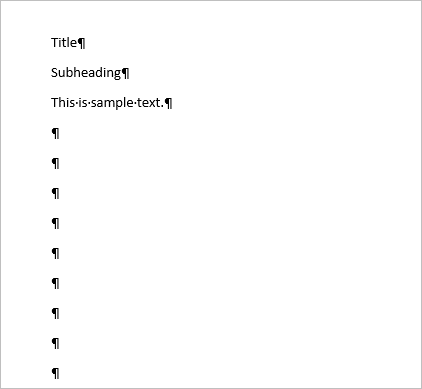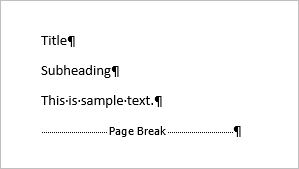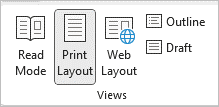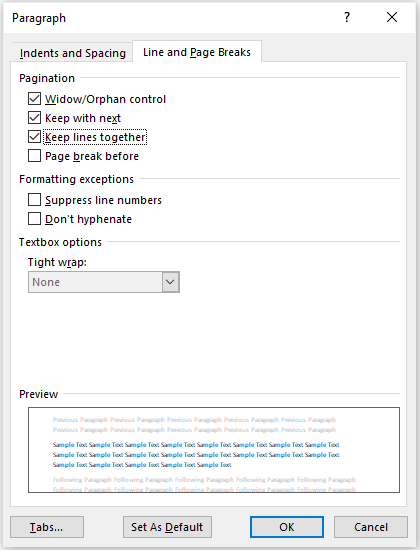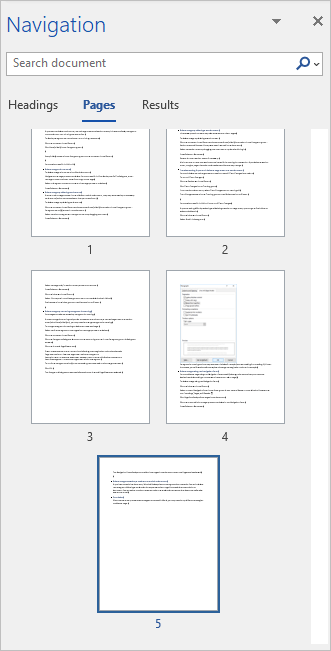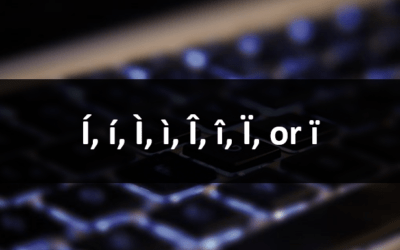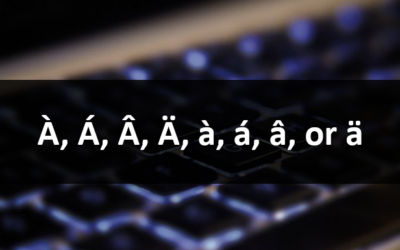7 Ways to Delete a Page in Word
by Avantix Learning Team | Updated September 21, 2023
Applies to: Microsoft® Word® 2013, 2016, 2019, 2021 and 365 (Windows)
In Word, you can delete a page in the middle or at the end of a document using several strategies. You can delete blank pages or pages that contain text and other content. Blank pages can be caused by unnecessary hard returns (pressing Enter too many times), manual page breaks, section breaks, paragraph formatting and tables so you will need to determine what is causing a blank page to remove it.
Note: Buttons and Ribbon tabs may display in a different way (with or without text) depending on your version of Word, the size of your screen and your Control Panel settings. For newer versions of Word, Ribbon tabs may appear with different names.
Recommended article: 14 Microsoft Word Shortcuts to Quickly Select Text
Do you want to learn more about Microsoft Word? Check out our virtual classroom or in-person classroom Word courses >
In this article, we'll review 7 ways to delete a page in Word:
- Delete a page with content
- Delete a page by deleting hard returns
- Delete a page by deleting a manual page break
- Delete a page by deleting a section break
- Delete a page by removing paragraph formatting
- Delete a page using the Navigation Pane
- Delete a page caused by a table at the end of a document
1. Delete a page with content
To delete a page with content in a Word document:
- Navigate to the page you want to delete. You can press Ctrl + G to display the Go To dialog box, enter the page number and then press Enter to go to the page.
- Select or drag over the text or content of the page you want to delete. You can also click at the beginning of the text and Shift-click at the end of the text.
- Press Delete or Backspace on your keyboard.
2. Delete a page by deleting hard returns
If extra or blank pages appear in the middle or end of a document, they may be caused by unnecessary hard returns (which are created each time you press Enter).
To delete a page by deleting hard returns:
- Click the Home tab in the Ribbon and ensure that Show/Hide ¶ is turned on in the Paragraph group. Paragraph marks (¶) appear in the document.
- Select the blank paragraphs or paragraph marks by dragging over them.
- Press Delete or Backspace on your keyboard.
In the following example, extra hard returns have been inserted in a document:
3. Delete a page by deleting a manual page break
If a manual page break has been inserted in a document, this may also cause extra or blank pages.
To delete a page by deleting a manual page break:
- Click the Home tab in the Ribbon and ensure that Show/Hide ¶ is turned on in the Paragraph group. Manual page breaks will appear if they have been inserted in the document.
- Select the manual page break by dragging over the break or by double-clicking it.
- Press Delete or Backspace on your keyboard.
- Repeat for other manual page breaks if necessary.
In the following example, a manual page break has been inserted in a document:
You can't delete manual page breaks or section breaks if Track Changes is turned on.
To turn off Track Changes:
- Click the Review tab in the Ribbon.
- Click Track Changes in the Tracking group.
- From the drop-down menu, select Track Changes to turn tracking off.
Track Changes appears in the Tracking group on the Review tab in the Ribbon:
You can also press Ctrl + Shift + E to turn off Track Changes.
If you are having difficulty selecting and deleting a section or page break, you can go to Draft View to select and delete it:
- Click the View tab in the Ribbon.
- Select Draft in Views group.
- Select the page and / or section break you want to remove.
- Press Delete or Backspace.
- Click the View tab in the Ribbon.
- Select Print Layout in the Views group to return to the default view in Word.
Draft and Print Layout appear in the Views group on the View tab in the Ribbon:
4. Delete a page by deleting a section break
Unnecessary section breaks may also cause extra or blank pages.
To delete a page by deleting a section break:
- Click the Home tab in the Ribbon and ensure that Show/Hide ¶ is turned on in the Paragraph group. Section breaks will appear if they have been inserted in the document.
- Select the section break by dragging over the break or by double-clicking it.
- Press Delete or Backspace on your keyboard.
- Repeat for other section breaks if necessary.
It is important to note that sections contain specific formatting for the section. If you delete a section break, margins, page orientation and headers and footers may change.
In the following example, a section break has been inserted in a document:
If you have difficulty deleting a manual section break, turn off Track Changes (as noted in deleting a manual page break).
5. Delete a page by removing paragraph formatting
Extra pages can also be caused by paragraph formatting.
If an extra or blank page is occurring and you do not see extra hard returns, a manual page break or a section break (with Show/Hide ¶ on), you may need to change paragraph formatting.
To change paragraph formatting to delete an unwanted page:
- Select the first paragraph on the page after the page you want to delete.
- Click the Home tab in the Ribbon.
- Click the Paragraph dialog box launcher on the bottom right corner in the Paragraph group. A dialog box appears.
- Click the Line and Page Breaks tab.
- Check to see whether one or more of the following three pagination options is selected:
Page break before – inserts a page break before a paragraph.
Keep with next – prevents a page break between the current and following paragraphs.
Keep lines together – prevents a page break within a paragraph. - Turn off the paragraph option(s) that are causing the unwanted or blank page to appear.
- Click OK.
The Paragraph dialog box appears as follows with the Line and Page Breaks tab selected:
Paragraph formatting options may have been included in a style (such as Heading 1 or Heading 2). If that is the case, you will need to edit the style and change the pagination options in the style.
6. Delete a page using the Navigation Pane
You can delete a page using the Navigation Pane as well (although this method may not have the desired result depending on the cause of the extra or blank page).
To delete a page using the Navigation Pane:
- Click the View tab in the Ribbon.
- Select or check Navigation Pane in the Show group. A task pane will apear on the left with 3 tabs at the top – Headings, Pages, and Results.
- Click Pages to display all the pages in the document.
- Click the thumbnail of the page you want to delete in the Navigation Pane.
- Press Delete or Backspace.
The Navigation Pane displays thumbnails of the pages in the document when the Pages tab is selected:
To display the Navigation Pane using a keyboard shortcut, press Ctrl + F. This will display the Navigation Pane with the Results tab selected. Click the Pages tab to display pages.
7. Delete a page caused by a table at the end of a document
If you insert a table in a document, Word will always insert a paragraph after the table. You can't delete the paragraph following a table and this may cause a blank page if the table is at the end of the document. You can select the blank paragraph after the table and change the font size to a smaller size as a workaround.
Since there are many reasons extra or blank pages are created in Word, you may need to try different strategies to delete a page.
Subscribe to get more articles like this one
Did you find this article helpful? If you would like to receive new articles, JOIN our email list.
More resources
4 Ways to Delete a Table in Word
How to Create a Table of Contents in Word
How to Clear Formatting in Word (with Shortcuts)
How to Double Space in Word (4 Ways + Shortcut)
How to Superscript or Subscript in Word (with Shortcuts)
Related courses
Microsoft Word: Intermediate / Advanced
Microsoft Excel: Intermediate / Advanced
Microsoft PowerPoint: Intermediate / Advanced
Microsoft Word: Long Documents Master Class
Microsoft Word: Styles, Templates and Tables of Contents
Microsoft Word: Designing Dynamic Word Documents Using Fields
Our instructor-led courses are delivered in virtual classroom format or at our downtown Toronto location at 18 King Street East, Suite 1400, Toronto, Ontario, Canada (some in-person classroom courses may also be delivered at an alternate downtown Toronto location). Contact us at info@avantixlearning.ca if you'd like to arrange custom instructor-led virtual classroom or onsite training on a date that's convenient for you.
Copyright 2024 Avantix® Learning
You may also like
How to Insert or Type I with an Accent Mark in Word (Í, í, Ì, ì, Î, î, Ï, or ï)
You can insert or type i with an accent mark in Word using built-in tools or keyboard shortcuts (including Alt code shortcuts). The letter i can be inserted with an accent in both upper or lower case. The following are common accented characters that you can insert or type in Word in upper or lower case: grave (Ì or ì), acute (Í or í), circumflex (Î or î) and umlaut (Ï or ï).
How to Insert or Type A with an Accent Mark in Word (À, Á, Â, Ä, à, á, â, or ä)
You can insert or type a with an accent mark in Word using built-in tools or keyboard shortcuts (including Alt code shortcuts). The letter a can be inserted with an accent in both upper or lower case. The following are common accented characters that you can insert or type in Word in upper or lower case: grave (À or à), acute (Á or á), circumflex (Â or â) and umlaut (Ä or ä).
10 Word Shortcuts to Select Text Using a Keyboard
You can use several shortcuts in Word to select text in your documents using only your keyboard. When you select text, it will typically be highlighted in grey. After you select text, you can cut, copy, or delete the selected text or apply character or paragraph formatting.
Microsoft, the Microsoft logo, Microsoft Office and related Microsoft applications and logos are registered trademarks of Microsoft Corporation in Canada, US and other countries. All other trademarks are the property of the registered owners.
Avantix Learning |18 King Street East, Suite 1400, Toronto, Ontario, Canada M5C 1C4 | Contact us at info@avantixlearning.ca


